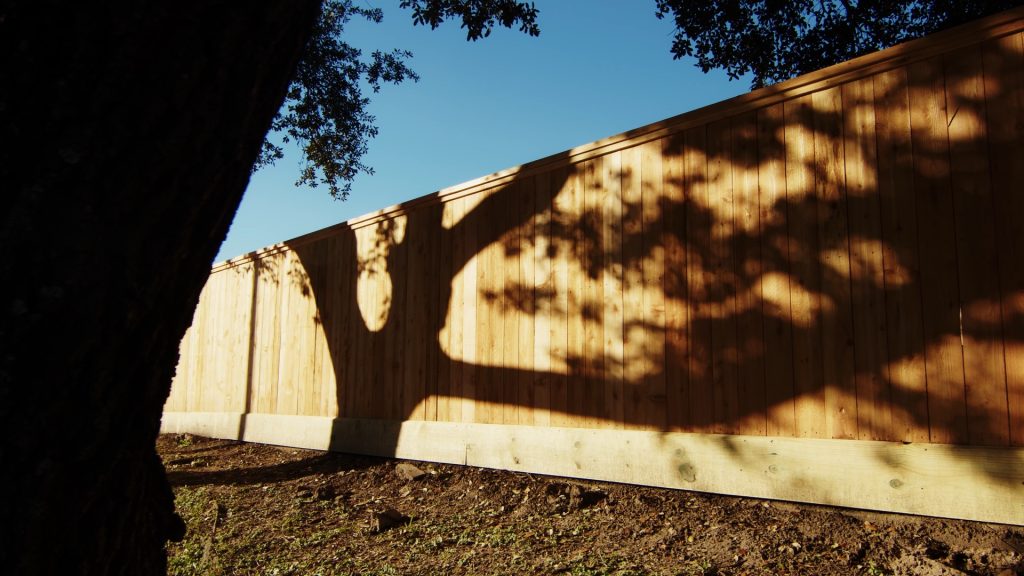New Fence Installations for Privacy and Security
We’ve all experienced the need for added privacy and security in our outdoor areas. New fence installations can be the ideal answer, but it’s not as straightforward as simply hammering some boards together. There’s a lot to think about, from selecting the appropriate materials to addressing legal stipulations. We’ll lead you through the entire process, ensuring you make well-informed choices at each stage. Whether you’re seeking a quaint wooden enclosure or a sturdy metal barricade, we’re here to assist you. Ready to enhance your property and achieve tranquility? Let’s delve into the realm of fence installations together.

Key Points
- Choose appropriate fencing materials based on privacy needs, security requirements, and budget constraints.
- Comply with local zoning laws, HOA regulations, and obtain necessary permits before new fence installations.
- Plan fence layout considering property boundaries, terrain, and utility lines to avoid conflicts.
- Select fence height and design that balance privacy and security with aesthetic appeal.
- Hire reputable contractors or follow proper installation techniques to ensure durability and effectiveness.
Types of Materials for New Fence Installations
In light of the various new fence installations options available, homeowners must carefully consider their material choices. We’ll explore the most common types of fencing materials to help you make an informed decision for your property.
Wood fencing remains a popular choice due to its natural aesthetic and versatility. We often recommend cedar or pressure-treated pine for their durability and resistance to decay. Cedar is especially prized for its natural oils that add strength and durability, making it a renewable and biodegradable material.
Vinyl fencing offers a low-maintenance alternative, providing long-lasting color and minimal upkeep. It’s an excellent option for those of us seeking a clean, uniform look.
For maximum security and longevity, we suggest considering metal fencing. Wrought iron fences offer classic elegance and superior strength, while aluminum provides a more affordable, rust-resistant option. Chain-link fencing, though less private, remains a cost-effective choice for large areas.
Composite fencing, made from a blend of wood fibers and recycled plastics, combines the best qualities of wood and vinyl. It’s an eco-friendly option that we’ve seen gain popularity among environmentally conscious homeowners.
Lastly, we shouldn’t overlook masonry options like brick or stone. While more expensive, these materials offer unparalleled durability and can noticeably enhance property value.
Costs and Budgeting
Understanding the costs linked with new fence installations is pivotal for effective budgeting. We’ll break down the primary expenses you’ll encounter when planning your new fence.
Material costs vary significantly, with wood being generally more economical than metal or vinyl options. Labor is a substantial portion of the total cost, typically ranging from 40% to 50% of the project budget. Don’t forget to factor in additional expenses like permits, site preparation, and potential landscaping adjustments.
It’s important to take into account longevity and maintenance costs when selecting your fence materials, as these can impact future expenses and property value. To create an accurate budget, we recommend obtaining multiple quotes from reputable contractors. This will give us a clearer picture of the market rates in our area.
It’s pivotal to consider long-term costs as well, such as maintenance and potential repairs. While a more affordable option might seem appealing initially, it may lead to higher expenses over time. We should also allocate a contingency fund of about 10-15% for unexpected issues that may arise during installation.
Legal Considerations and Permits
Three key legal aspects must be addressed before new fence installations: zoning laws, property lines, and permit requirements.
We must first consult our local zoning ordinances to guarantee our planned fence complies with height restrictions, setback requirements, and material regulations. These laws vary by municipality, so it’s essential we verify the specific rules for our area. It’s also important to take into account HOA regulations to ensure the fence aligns with neighborhood standards and requirements.
Next, we need to confirm our property boundaries. Let’s obtain a recent survey or hire a professional surveyor to avoid encroaching on neighboring properties. This step is crucial for maintaining good relationships with our neighbors and preventing costly legal disputes.
Design and Planning
Designing and planning our new fence installation is a critical phase that sets the foundation for the entire project. We’ll need to take into account various factors to make sure our fence meets our privacy and security needs while complementing our property’s aesthetic.
Let’s start by evaluating our property boundaries and terrain. We’ll measure the perimeter accurately and note any slopes, obstacles, or unique features that may impact our fence placement. Next, we’ll select our fence style, material, and height based on our specific requirements and local regulations.
Here’s a quick reference guide for common fence types:
| Fence Type | Privacy | Security | Durability | Cost | Maintenance |
|---|---|---|---|---|---|
| Wood | High | Medium | Medium | $$ | High |
| Vinyl | High | Medium | High | $$$ | Low |
| Chain-link | Low | Medium | High | $ | Low |
| Wrought Iron | Low | High | High | $$$$ | Medium |
| Aluminum | Medium | Medium | High | $$$ | Low |
We’ll also need to plan for gate placements, taking into account accessibility and convenience. Finally, we’ll create a detailed layout sketch, marking utility lines and underground obstacles. This thorough planning ensures smooth new fence installations process and a fence that meets our expectations for years to come.
New Fence Installations Process
With our design and planning phase complete, we’re ready to start the installation process. Let’s begin the step-by-step procedure that’ll turn our vision into reality.
First, we’ll mark the fence line and locate utilities. We’ll contact 811 to have underground lines identified before digging.
Next, we’ll place the fence posts, usually spaced 6-8 feet apart. We’ll excavate holes 1/3 the height of the post plus 6 inches for gravel drainage. We’ll use a post-hole digger or power auger for efficiency.
After placing posts in concrete, we’ll affix the fence rails. For wood fences, we’ll fasten them to the posts using galvanized nails or screws. For chain-link fences, we’ll insert the top rail through the post caps and attach tension bands.
Finally, we’ll install the fence panels or chain-link mesh. We’ll make sure everything is level and securely in place. For gates, we’ll set up hinges and latches, ensuring they’re aligned and functioning smoothly.
Throughout the process, we’ll use a level, measuring tape, and string line to maintain straightness and consistency. By following these steps, we’ll construct robust, enduring new fence installations that improves our property’s privacy and security.
Frequently Asked Questions
How Long Do Typical New Fence Installations Take From Start to Finish?
We typically complete a fence installation in 1-3 days, depending on the project’s complexity and size. We’ll assess your property, prepare the site, set posts, install panels, and add finishing touches efficiently to enhance your home’s privacy and security.
Can I Install a Fence on a Sloped or Uneven Property?
Yes, we can install fences on sloped or uneven properties. We’ll use techniques like racking or stepping to adapt the fence panels. Our team’s expertise guarantees a seamless installation that follows your terrain while maintaining privacy and security.
What Maintenance Is Required for Different Types of Fencing Materials?
We recommend regular maintenance for all fence types. Wood needs staining and sealing, metal requires rust prevention, vinyl should be cleaned, and chain-link may need tightening. We’ll inspect annually and address issues promptly to guarantee longevity and performance.
How Do I Choose the Right Fence Height for My Specific Needs?
We’ll help you choose the right fence height. Let’s consider your privacy needs, local zoning laws, and aesthetic preferences. We’ll measure your property line and assess sight lines. Together, we’ll determine the ideal height for your situation.
Are There Eco-Friendly or Sustainable Fencing Options Available?
We’re pleased to offer eco-friendly new fence installations options. We recommend bamboo, reclaimed wood, or composite materials made from recycled plastics. These sustainable choices not only protect our environment but also enhance our properties with style and durability.
Takeaway
We’ve covered the essential aspects of new fence installations for privacy and security. By carefully considering materials, costs, legal requirements, design, and installation processes, we can guarantee a successful project. Curiously, a study by the American Society of Landscape Architects found that privacy fencing can increase property values by up to 20%. As we implement these guidelines, we’ll create a secure and aesthetically pleasing boundary that enhances our property’s functionality and worth.








